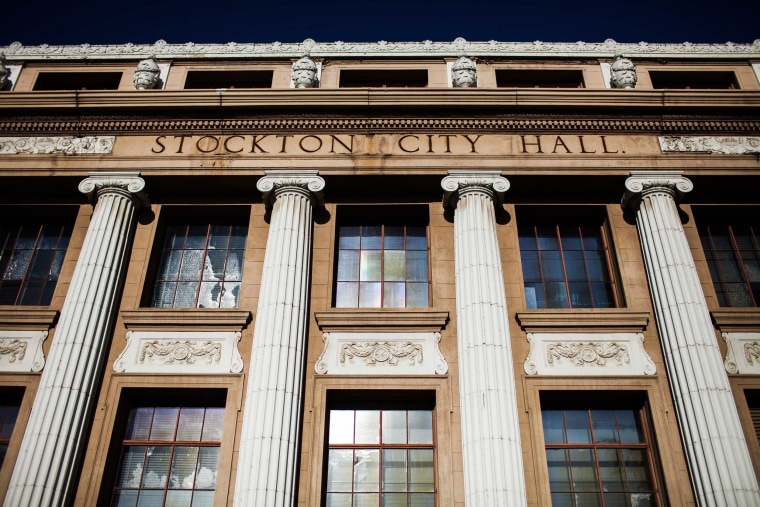Stockton, the city of some 300,000 people where a bank robbery, deadly hostage drama and gunfire-filled pursuit played out Wednesday, has struggled to contain violent crime and homicide in recent years amid the great recession and housing collapse, large-scale municipal budget cuts including deep reductions in the police department as well as a Chapter 9 bankruptcy.
The city saw record-setting homicide rates in 2011 when 58 slayings were reported climbing to 71 the following year. The murder rate dropped by half to 32 in 2013 as Stockton PD formed partnerships with outside law enforcement agencies, tried to bolster community based policing in addition raising and restoring funding to bolster the force.
Still the violent crime rate is high given its population. The violent crime rate in Stockton in 2012 was 4,630 violent crimes per 100,000 population with 4,155 per 100,000 the previous year, according to the most recent full-year of crime statistics in the FBI Uniform Crime Report. In contrast, San Jose, a city of nearly of 1 million people saw 3,547 violent crimes per 100,000 people in 2012 and 3,206 per 100,000 in 2011.
Stockton gained notoriety for a 1989 schoolyard shooting that shocked the California’s conscience and led to changes in the state’s gun-control laws that became models for the country. In 1989, California became the first state to ban military-style assault weapons after shooting rampage in the northern San Joaquin Valley city where a drifter Patrick Purdy opened fire at a schoolyard, killing five children and wounding 30 others.
Purdy fired more than 100 rounds using a AK-47 type semiautomatic before taking his own life. Outcry from the shooting led the California Legislature to pass the Roberti-Roos Assault Weapons Control Act restricted importation, distributing or manufacturing about 75 types of semiautomatic rifles, shotguns and pistols designated by brand name to be “assault weapons.” The law was later strengthened to restrict generic features — such as large-capacity magazine clips, folding stocks and flash suppressors.
The California law became the inspiration for efforts to outlaw assault weapons.
